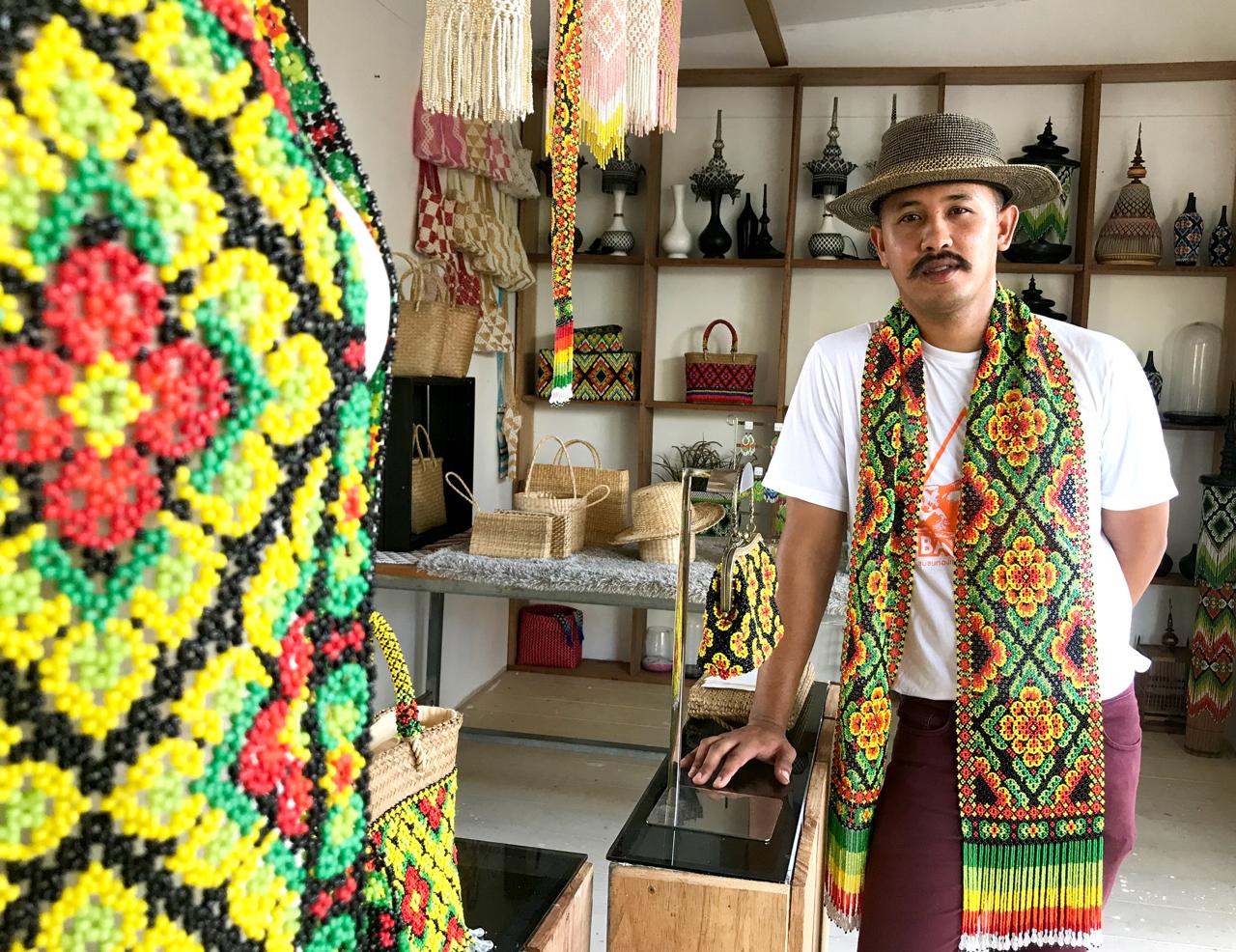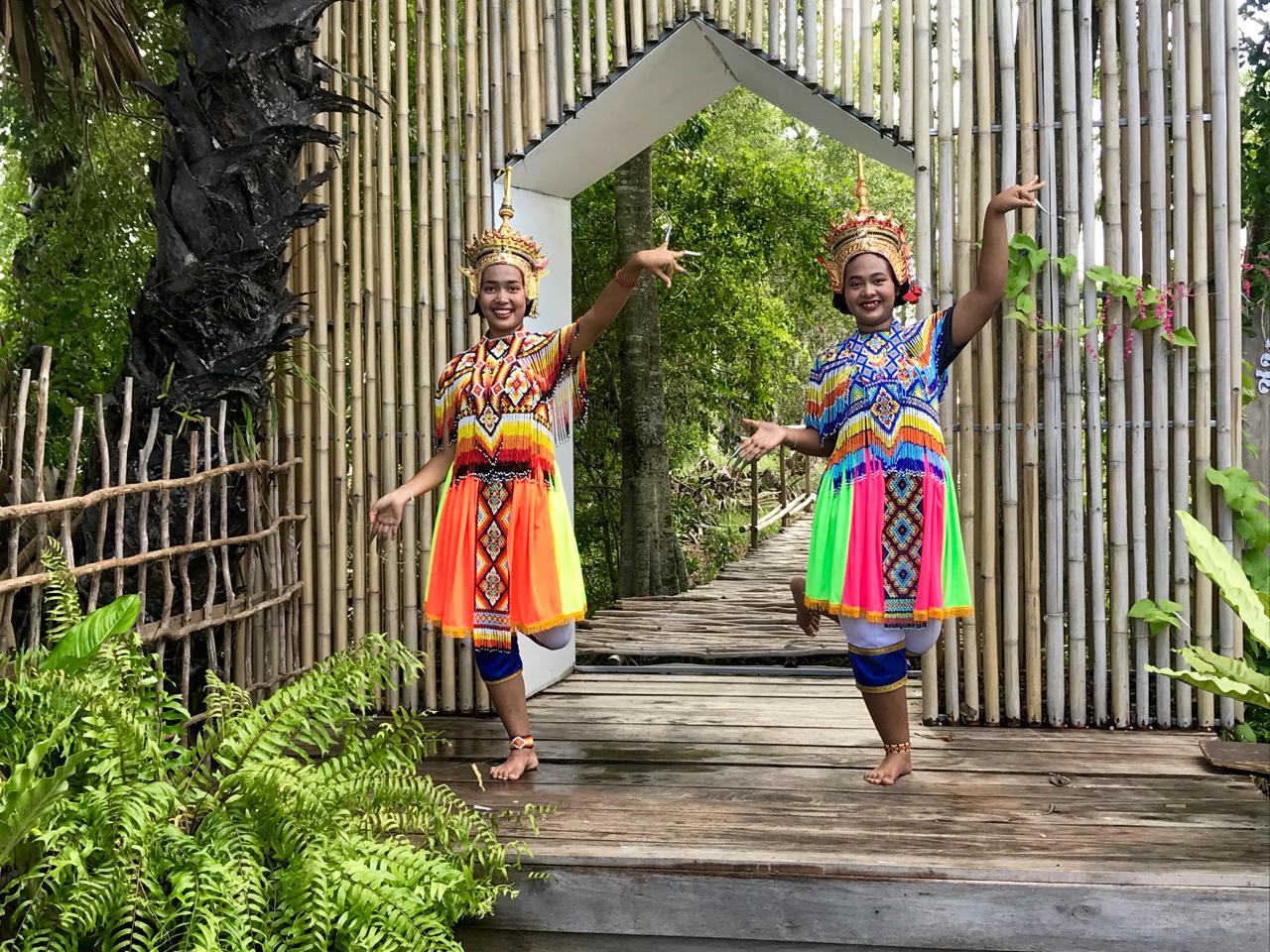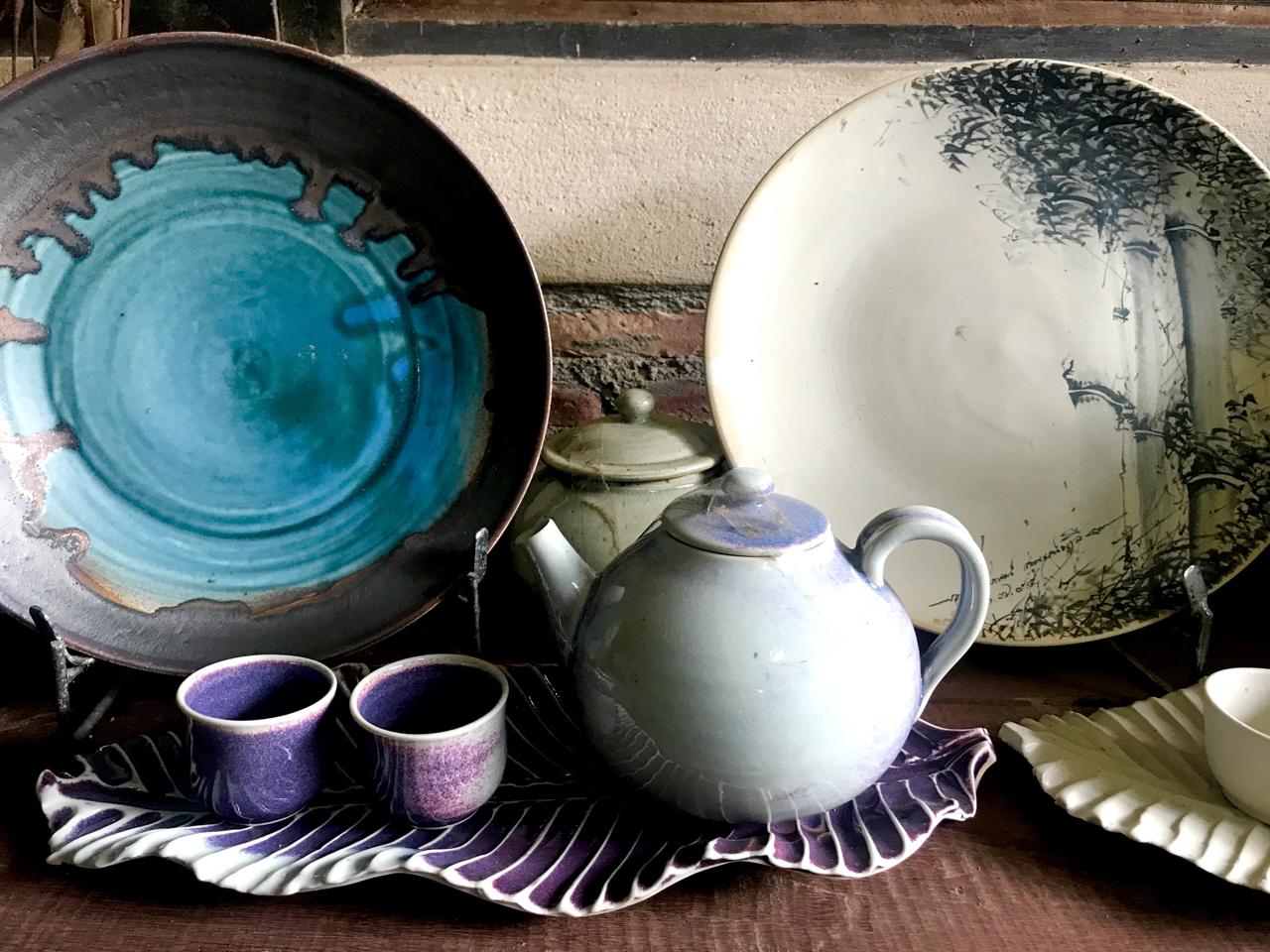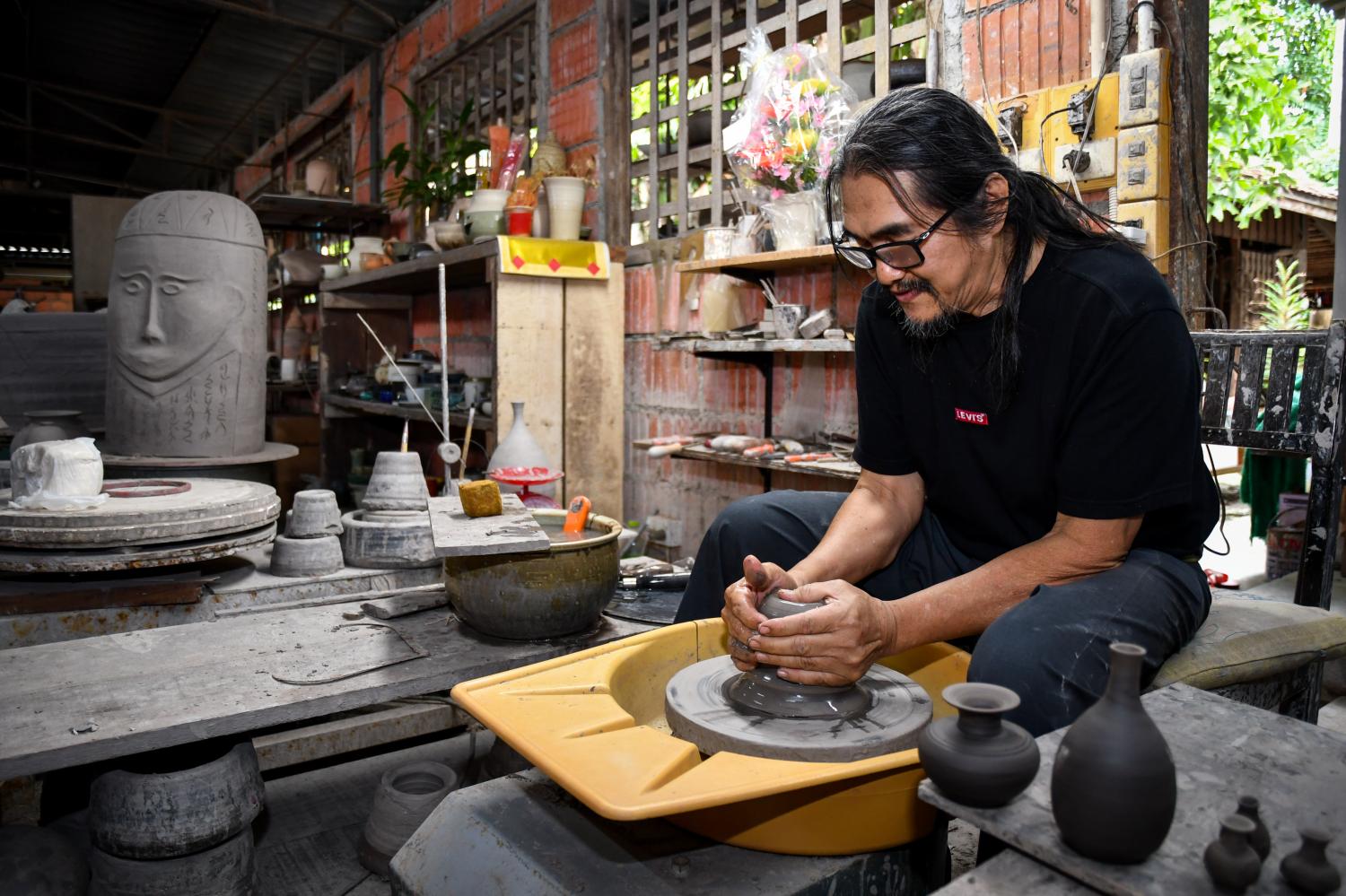
The sweet fragrance of cocoa diffuses in the air inside the house of Preecha Inkong, the owner of Rose Cocoa Garden, in Tha Sala district in Nakhon Si Thammarat.
He and his wife Janejira are bean-to-bar chocolatiers. They open their house for group visitors to learn how to make a chocolate bar from scratch. It is my first time seeing cacao trees, tasting cacao pulp and sampling roasted cocoa beans and a pure dark chocolate bar. Thanks must go to the efforts of the Thailand Convention & Exhibition Bureau (TCEB) for highlighting more than 150 activities in 14 provinces for group travellers of Meetings, Incentives, Conventions and Exhibitions (Mice). The aim is to encourage the travellers to stay a bit longer in order to have local experiences in the provinces.

"Seven Mice Magnificent Themes 2019" is the concept of its campaign. The themes include attractions and communities related to history and culture, adventure, team-building, corporate social responsibility, beach activities, luxury and culinary concerns. I had a chance to join several workshops with locals in communities in Nakhon Si Thammarat and also in Songkhla. The exposure motivates me to revisit those places because it opens another shade of joy and happiness.


During the visit to Thawatchai's orchard, we harvested ripe cacao pods and tasted the thin white pulp of the cacao beans. It was sweet (but the beans have a bitter taste). Thawatchai sells the ripe fruit for 35 baht per kg nowadays, which is a big increase on the 5 baht per kg he got when his family started the business three decades ago. The cacao fruit is bought by local chocolate producers, among them Preecha Inkong, the owner of Rose Cocoa Garden. The process of making chocolate bars from ripe cacao beans takes about 20 days. It starts with fermenting cacao beans in a wooden box for a week, sun drying them for another week then roasting the beans and taking out the hulls. The dark beans, which are called cocoa, can be eaten as a snack, but taste bitter and sour. The last part of the process is to conche the cocoa beans in a conching machine until smooth. The process takes four days. The texture of the cocoa mass is very creamy and can easily melt in the mouth. Arunothai Puttaruksa
Our three-day journey starts in Tha Sala district in Nakhon Si Thammarat. We visit an orchard belonging to Thawatchai Septham. He has been planting cacao trees for 30 years. The trees are grown along with other fruit trees like longgong, mangosteen, durian, banana and coconut on a 30 rai plot of land. One benefit of having other fruit trees along with cacao trees is that the cacao fruit will have the hints of other fruit that make Thawatchai's cacao beans unique. It also leads to a higher price, as demand in the market is high.
Not far from the orchard, we stop at Rose Cocoa Garden to experience how cacao beans are turned into chocolate bars. We have a chance to taste roasted cocoa beans and pure dark cocoa mass. The taste is bitter, sour and nutty.



Ban Laem Community in Sichon district, Nakhon Si Thammarat has activities that allow travellers to get close to nature, such as growing mangrove seedlings or trying a mud spa. The locals can arrange workshops in their village or nearby hotels for visitors to dye cloth with the natural colour of mangrove leaves. They can also learn to prepare local dishes like deep-fried mangrove leaves, steamed seafood served with black fried rice and stir-fried black noodle dishes which are cooked with squid ink. The community also produces mangrove leaf tea and body lotion, and mud scrub and masks. Arunothai Puttaruksa
According to Preecha, the demand for bitter and sour cocoa mass is higher than cocoa mass with only a bitter taste. This, he reasons, is because when cocoa mass is turned into chocolate, bitter and sour cocoa mass requires less sugar. Rose Cocoa Garden also produces its own homemade chocolates. The pure chocolate is nutty and has a pleasant sweet smell. None of us can resist buying some to bring back home.
Nakhon Si Thammarat has a long coastline along the Gulf of Thailand. It is not hard to find scenic sandy beaches. Our choice is Hin Ngam Beach in Sichon district, where we engage in water sports like windsurfing to pump up our adrenaline. The Palm Windsurfing Club of Sichon Cabana Resort offers surfing classes and equipment. With the help of professional trainers, we can learn basic skills like balancing on the surfboard and also practise safely.



The red pulp and sweet taste are the standout qualities of Tabtim Siam pomelo. Grown in Pak Phanang district, Nakhon Si Thammarat for two decades, Tabtim Siam pomelo is the geographical indication (GI) product of the district. This variety originated in Pattani and is originally known as khieo morakot pomelo. This has an appealing look with bright green peel, and tastes somewhat bitter. But when the trees are grown in Pak Phanang, the bitterness is almost gone. The sweetness of Tabtim Siam pomelo is thanks to the high calcium in the fertile soil, according to Amporn Sawatsuk, owner of the Sawatsuk Pomelo Orchard. It is a five-star One Tambon One Product (Otop). The price for a fruit weighing about 1.3kg is 250 baht. Arunothai Puttaruksa
Another stop we make in Nakhon Si Thammarat while heading further south to Songkhla is Sawatsuk Pomelo Farm in Pak Phanang district. Here, we have a chance to sample the Tabtim Siam pomelo variety, the most delicious and expensive pomelo in Thailand. The colour of the juice vesicles are ruby-red. The taste is sweet and a little sour. It is quite a refreshing fruit. The farm owner, Amporn Sawatsuk, also arranges a workshop for us to make spicy pomelo salad, a snack that is both healthy and delicious.
About an hour later, we arrive in Manorah Beading Arts and Crafts centre in Ranot district in Songkhla. Run by Natipong Laisam, 30, the centre offers a chance for visitors to learn how to make beadwork like keychains, bracelets or bags with manorah costume patterns. (Manorah is a traditional Southern dance). We each make a colourful beaded keychain, which is not difficult to learn but requires good eyesight.



Nitipong Laisam, 30, has opened his house as a learning centre for beadwork. His aim is to preserve manorah costume designs by adapting the patterns of the bead embroidery to create home decorations and fashion accessories. The designs make his products unique. He also founded Ban Khao Manorah Beading Arts and Crafts Community Enterprise to create work for locals. Recently, he won a contract with a Thailand-based hotel in the Maldives to create interior beadwork decorations for the hotel. The project created jobs for 200 people in his community. In the future, he plans to further promote his home as a tourist attraction by opening a restaurant and homestay service. Karnjana Karnjanatawe
In Songkhla, we visit hidden gems that are full of creativity, like the art gallery a.e.y.space. The charming renovated building won the Architectural Conservation Award of the Association of Siamese Architects last year. Another great spot is 238 Inspiration House, a private textile museum for those who love traditional textiles and want to see rare collections of centuries-old cloth in the South.
Our last stop is Potter House, where we get our hands dirty learning how to make our own design ceramicware. It is hard to believe that our trip is about to end when there are still many interesting things to explore.




Pakorn Rujiravilai, 47, renovated a 100-year old shophouse on Nang Ngam street in the old town of Songkhla into an art space. Called a.e.y.space, the two-storey building covering 500m² is divided into galleries, a cinema/meeting room and two bedrooms reserved only for artists. He expects that his artist-in-residence programme can help those who with creative minds to spend time in Songkhla, be inspired and create works based on the local experiences. Born in Songkhla, Pakorn spent about 6 million baht to purchase two connected Chinese-style shophouses eight years ago. He spent another 2 million for refurbishing. He has a simple aim which is to spread a love of the arts. Through his efforts, he hopes that he can help promote his beloved hometown. Arunothai Puttaruksa


This is 238 Inspiration House, a private museum run by Panya Phoonsin, 49. Located on Nakhon Nok street in old town Songkhla, the museum houses an exhibition of old textiles that Panya has been collecting since he settled in Songkhla five years ago. Some items are priceless, such as the royal dresses and fabrics made of real gold threads, as well as the armour of female rulers in the South. Arunothai Puttaruksa




Padungkeat Rattanasri, the owner of Potter House in Hat Yai, can organise a workshop for those who want to create handmade pottery. For beginners like us, instead of using a potter's wheel, we use a wooden board and wooden rolling pin. We knead and flatten a chunk of clay into a round or rectangular shape. Then we use our hands to create plates, bowls or cups. Padungkeat and his team will later bake our pieces in an oven and send the finished product to us in Bangkok. Arunothai Puttaruksa

Pun Eatery and Pottery arrange a chef's table experience prepared by Kunat Rattanasri or chef Pun, son of Padungkeat, and his wife chef Deer. The restaurant is situated at the front of Potter House. Every dish features sizeable portions and wonderful presentation. Besides the mouth-watering fusion food, the restaurant allows customers to purchase any ceramic dishes that they like after finishing the plates. Arunothai Puttaruksa
